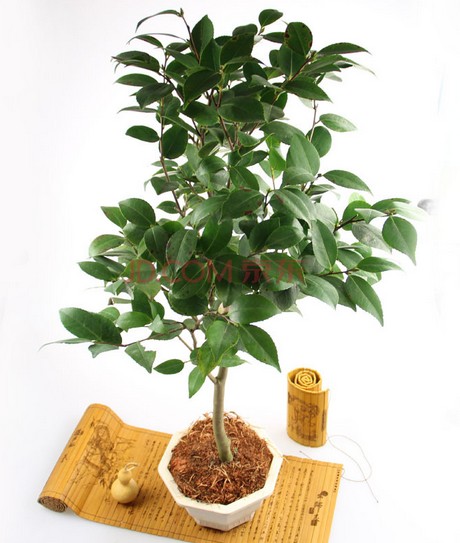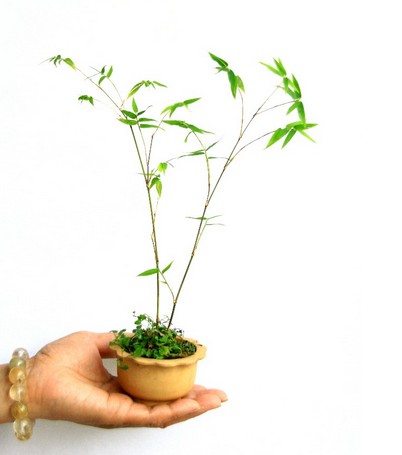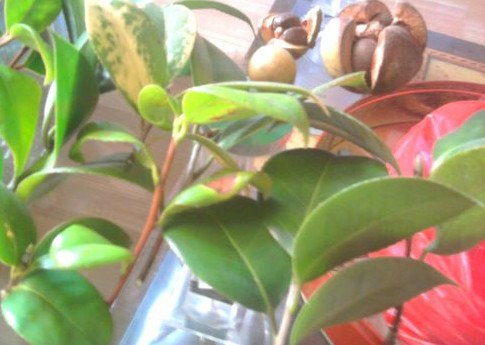Misunderstandings to be avoided in fertilizing Camellia Bonsai
Many people like to grow flowers at home, which not only beautifies the room, evolves the air, adjusts temperature and reduces heat, but also edifies sentiment and pleases the body and mind. However, in addition to watering potted flowers, fertilization is also an important link in the process of raising flowers. When flowers are in the growing period, fertilization can promote the vigorous growth of flowers, so it is necessary to apply more fertilizer, while when flowers are dormant, potted flowers grow slowly. It is necessary to apply less fertilizer.

There are many topics related to camellia fertilization on the Internet, and many people have put forward their own views on camellia fertilization. Some of them are very objective, practical and scientific, but there are also some who do not know whether they do not understand or are biased. I made a list of the following statements:
1. Do not apply fertilizer when picking new branches, because they are afraid that burning roots will affect the extraction of new branches.
2. Do not apply fertilizer in high temperature season, because it is easy to burn seedlings in high temperature season.
3. The reason for not applying fertilizer after the bud is exposed is that it is afraid to burst the bud and drop the bud.
4. do not apply fertilizer during flowering, on the grounds that the flowering period will be shortened and the flowers will fall.
5. No fertilization in winter, the reason is that plants are not absorbed by fertilizing in winter, which is a kind of waste.
There are some other statements that are not listed one by one, which are more representative. Here, based on my own shallow understanding of camellias and fertilizers, I would like to express my views on the above statements from my own point of view:
1. Do not apply fertilizer when drawing new branches, for fear that root burning will affect the extraction of new branches. I would like to ask: does the concentration of this fertilizer have to be used to burn roots when drawing new branches? Can't you lower the concentration and use less? Or are you afraid to use it because you are afraid to master this concentration? If it is the latter, wouldn't it be absurd to confuse "dare not use" with "unsuitable" or "cannot be used"? If this plant is already short of fertilizer, is it not necessary to draw new branches?
2. if there is no fertilization in the high temperature season, it is easy to burn the seedlings in the high temperature season. It is a big misunderstanding that fertilizer is easy to burn seedlings when the temperature is high. In high temperature conditions, fertilizer conversion will be faster, easy to volatilize, but will not burn seedlings. Usually use what concentration high temperature season with the same concentration will not burn seedlings, it is worth noting that the high temperature season soil moisture must be mastered, do not let it too dry. If you are afraid of burning seedlings, you can lower the concentration.
3. The reason for not applying fertilizer after the bud is exposed is that it is afraid to burst the bud and drop the bud. Although my contact time with camellias is not too long, it is not too short. It is exactly 20 years. I have seen a lot of problems and problems with camellias. I have even encountered things that I could not have dreamed of. But this "sudden bud" has never been encountered. As for the reason for it, I dare not jump to the conclusion that it has something to do with fertilization. I don't agree with it for the time being. Because I have done destructive experiments for two years in a row (using chemical fertilizer in the first year and rotten chicken manure in the second year) (using 2 to 3 times the usual amount at the beginning of flowering), I didn't find a bud burst, and the flowers were big and gorgeous. So I personally think that "sudden bud" should have another reason. If the budding of camellias is caused by fertilization, it must be caused by damaging fertilizer, and there will be absolutely no budding after fertilization. if there is another reason for falling buds, there must be other reasons that have nothing to do with fertilization (there are many reasons for falling buds: too weak plants, too many remaining buds, long-term lack of light in overcast and rain, freezing injury, diseases and insect pests, and so on. ).
4. No fertilizer is applied during flowering, because the flowering period will be shortened and the flowers will fall. Will fertilization drop flowers during flowering? The reason is the same as the third point, as long as it does not cause fertilizer damage, it will never fall. Here I would like to talk about "the flowering period will be shortened." anyone with some common sense should know that the long and short flowering period of camellias should first be related to the characteristics of the variety; moreover, it is directly related to the weather and temperature at the time of flowering; the strength and weakness of plants are also related to diseases and insect pests. Anyway, fertilization during the flowering period of camellias will shorten the flowering period, except for the factors of injury and fertilizer, with my shallow understanding of camellias and fertilizers, at least there is no theoretical basis.
5. It is a waste if there is no fertilization in winter and the plants are not absorbed by fertilizing in winter. This problem is really easy to be fooled without a little expertise, and it will be clear if you know the process of fertilizer from applying to the soil to being absorbed by plants. After being applied to the soil, most of the fertilizers are absorbed and fixed into insoluble fertilizers by the soil, only a few of them are absorbed by plants, and some fertilizer plants can not be absorbed directly and need to be transformed before they can be absorbed by plants. After being fixed by soil, the release of insoluble fertilizer is weathered, decomposed and transformed into water-soluble fertilizer very slowly under the action of physical, chemical and microbial factors. Strictly speaking, winter fertilization is not to "eat" plants directly, but to prepare for the coming spring, temporarily placed in the "warehouse" (soil), and plants can "eat" fertilizer at any time when the temperature rises in the coming year.
Time: 2019-06-13 Click:
- Prev

Pruning skills of Phoenix tail Bamboo Bonsai
Phoenix tail bamboo plant cluster is beautiful, the branches are slender, curved and drooping, like the Phoenix tail, the ornamental value is very high. It is an excellent landscaping material in the south, often planted in building corners, road corners or corridor racks, resistant to pruning, and can also be planted as hedges. The pruning of bonsai of Phoenix tail bamboo is relatively simple.
- Next

Seed treatment of potted Camellia during sowing
Under the condition of pot culture, especially in the non-origin of camellia, camellia generally bear little fruit, only under the conditions of low degree of single petal or stamen petal, normal pistil development, artificial pollination and suitable temperature and humidity. to get seeds with the ability to germinate. When the capsule is reddish and dehiscent
Related
- Fuxing push coffee new agricultural production and marketing class: lack of small-scale processing plants
- Jujube rice field leisure farm deep ploughing Yilan for five years to create a space for organic food and play
- Nongyu Farm-A trial of organic papaya for brave women with advanced technology
- Four points for attention in the prevention and control of diseases and insect pests of edible fungi
- How to add nutrient solution to Edible Fungi
- Is there any good way to control edible fungus mites?
- Open Inoculation Technology of Edible Fungi
- Is there any clever way to use fertilizer for edible fungus in winter?
- What agents are used to kill the pathogens of edible fungi in the mushroom shed?
- Rapid drying of Edible Fungi

